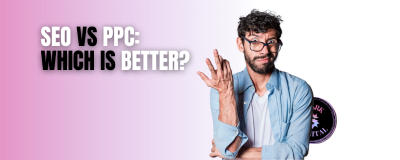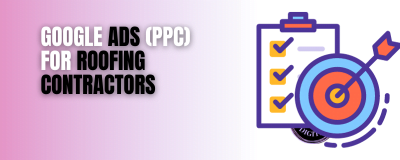Google always seems to know exactly what you are looking for. It has an uncanny ability to show you the right top 10 results instead of the wrong ones.
The reasoning behind this is that it uses the combination of SEO and search intent. You see, Google ranks (or decides to show in lay terms) web pages based on its own machine learning. As you would expect, Google has placed an incredible amount of resources into improving this practice over the years. The results that are delivered now are the most accurate ever.
In this post we will take a closer look at search intent for SEO in 2023, breaking down the various different types and detailing how your website can benefit from the use of them.
Let’s get into this. Here’s everything you need to know about search intent and SEO.
What Is Search Intent?
Put simply, search intent is the reason why a particular person carried out a Google (or other search engine) search.
These searchers can expect to see a specific type of result based around the terminology that they have searched with. But, remember, not all results are equal.
If Google were a more basic search engine then you could expect it to use the words and only the words from each particular search. However, thankfully that is not the case.
Here is a small example of what we mean:
“Best golf brands”
“How to change a plug fuse?”
“Why did Bill Clinton fall from power?”
As you might expect there are large volumes of search results that will match these queries. But, what about the actual intent behind each search? What information do you think that the searches are really looking for?
To us, we would expect to see information like this:
Best golf brands should feature professional written golf blogs which includes 10 or more golf brands, along with main highlights and which individuals they are focused towards.
How to change a plug fuse really should produce video posts followed with step-by-step guides on exactly how to complete the task.
The final search should produce articles (not generic info) on Bill Clinton’s last months as a sitting US President.
Google tends to think this way too, using its own insights into search intent to tailor the content specifically to each particular user.
The key take-away here is that when it comes to SEO, you have to give consideration to search intent as opposed to purely factoring in keywords and phrases.
So, essentially search intent is all about using the right keywords so that your products and services will rank when a person carries out a search. Factoring in search intent is critical, because it is that which ‘persuades’ someone to click on your site rather than your competitors.
The Different Types Of Search Intent
There are 3 main types of search intent, which will help you to optimise your website information for each one.
Informational Intent
This is where the user is looking purely for information. They are trying to find out or learn something. They might not be shopping or looking to make a purchase.
Navigational Intent
This type of search relates to the user looking to be shown specific brands or websites. They know exactly where they are looking to go.
Transactional Intent
Here the user is looking to complete a specific action. In most cases they are looking to purchase something. Please note, it doesn’t always have to relate to an online store. They might be looking to book an appointment or something similar.
Why Is Search Intent So Important?
The search engine’s primary reason for existence is to give the user the best search experience, through its results. Platforms like Google are built around search query intent.
Search intent matters in 2023 because it is the reason why results appear at the top of the search pages.
A few years back (2019) Google rolled out the BERT update. The focus here was predominantly around the ability to understand natural language usage. This allowed Google to improve its interpretation of not just the specific words but also the non-spoken elements that sit behind these words (intent).
When Google says ‘jump’, it is best from a marketing perspective to ask ‘how high, Google?’
Clicks to your website count for nothing if your website fails to deliver. Aligning it towards intent is the only way to give your visitor what they are looking for.
Carrying out search terms for your website or indeed a client’s site means more than just looking at purely search terms with their respective volumes. Ideally you should be looking to provide suggestions and recommendations on how to change a page, building something that matches up with the visitors expectations.
Avoiding shortcuts when carrying out this research will pay dividends in the longer term.
Understanding the connection between SEO and search intent is vital for effective marketing in 2023 (and beyond). This is perhaps why John Meuller from Google has gone on record to state that the search engine “prioritises content that is the most relevant for specific queries, as opposed to pages that just get the most engagement”.
Determining Search Intent
As you might expect, Google is your best pal when it comes to determining search intent.
You can check the search engine results page (SERPs) to understand what is populating a specific set of results.
[IMPORTANT] Remember to carry out an incognito search, or clear your browsing history beforehand. This way you will get results that are akin to what a potential searcher will see, rather than ones based on your own history.
Look out for elements such as; a featured snippet or an answer box. Do you see FAQ pages, content pages or product pages towards the top of the page.
Reviewing the information here will allow you a better understanding on the best way to build out a new page for your site, or restructure one you already have.

Can You Use Paid Search Information?
Yes, paid search data is another great way to help you understand the intent of search terms.
You can make use of the Google Keyword Planner tool (which is free if you are an Ads user) or tools like Semrush. Both are perfectly fine to give you the info you need to make an informed decision. Paying attention to the cost-per-click (CPC) is useful too.
As a general rule the lower priced search terms tend to feature earlier in the funnel (informational) and the more expensive priced (transactional) terms appear later. Using this rule will help you to understand better the intent of the keywords that you are looking to target.

Visitor Interaction & Engagement Analytics
You can sanity check your progress by reviewing some of the data from Google Search Console and Google Analytics.
Here you will be looking to understand what action the visitor took once they were on your page.
Identifying information around bounce rate (is it too high?) and exit pages can help to shed light on whether or not your visitors are accessing content that meets their own intent.
Try to avoid a daily snapshot as this often leads to a knee-jerk reaction. Analyse the data for trends as this will be the best way to implement changes that lead to improved results.
Optimising SEO for Search Intent
Because search engines never stop evolving you need to take action too. Search intent isn’t a ‘set and forget’ action. It’s part of an ongoing process. Staying in tandem with Google will help to ensure your website maintains its position at the top of search for the information that really matters to people.
Analyse the information seen in SERPs. This will help you to nail down the content that users are searching for. Lock this into your landing pages to deliver exactly what they want.
Be aware that the landscape for search really does change.
For example, you might be a swimming centre who ranks well for ‘pool lessons’ and then Google updates its understanding of this phrase with the intent switching to a synonym of pool, this time the billiards version.
Search Intent Isn’t Going Away
Don’t expect Google to deviate from search intent any time soon. In fact, ever.
The tech giant is always trying to improve its understanding of the way that humans think. Providing results that resonate with the user is one way to ensure that people stay on its engine. Pause for thought on just how much Ad revenue Google derives each year, it would be hard to maintain (or improve this) if the results it gave were poor, wouldn’t it?
The Wrap Up - Search Intent For SEO In 2023
Now you have reached the end of this post we are pretty confident your understanding of search intent has improved.
The key take-aways for us is to be sure to check SERPs on a regular basis. This gives a great insight into the type of content that Google is trying to show for specific intent based queries.
For us, search intent plays an integral role in the strategies that our clients have when it comes to local SEO. It’s fair to say that utilising intent properly is a real game-changer for most businesses.
Check Out These Related Posts
How To Measure SEO ROI The Easy Way11 min read
SEO can help businesses grow, but it can be expensive without proper controls. To achieve success, measure ROI and take steps to improve it. This post discusses what ROI for SEO looks like and how to measure it.
SEO vs PPC: Which is Better In 2023?14 min read
The COVID-19 pandemic and Ukraine conflict have destabilised the economy, leading to rising inflation and earnings. Businesses can still succeed by marketing effectively, with SEO and PPC being effective ways to gain new business. The post discusses the differences between each platform and which could be a better fit for a business.
Is My SEO Agency Really Helping?17 min read
SEO can be frustrating if you don’t know if your agency is doing their best work. Many agencies don’t give a damn about their clients and don’t deliver on their promises. This post aims to answer the question of whether your SEO agency is helping you.
Local SEO Case Study Fencing Contractor4 min read
[dipl_double_color_heading heading_main_part="Case Study Fencing Contractor Service" _builder_version="4.14.4" _module_preset="default" global_heading_settings_level="h1" global_heading_settings_text_align="left" pre_header_font="||||||||"...
Local SEO Case Study Accountant & Bookkeeper3 min read
[dipl_double_color_heading heading_main_part="Case Study Accountant & Bookkeeper" display_in_stack="on" _builder_version="4.14.4" _module_preset="default" pre_header_font="||||||||" main_header_font="|700|||||||" custom_margin="0px|0px|0px|0px|false|false"...
Local SEO Case Study HVAC Contractor3 min read
[dipl_double_color_heading heading_main_part="Case Study HVAC Contractor" _builder_version="4.14.4" _module_preset="default" global_heading_settings_level="h1" pre_header_font="||||||||" main_header_font="|700|||||||" custom_margin="0px|0px|0px|0px|false|false"...










